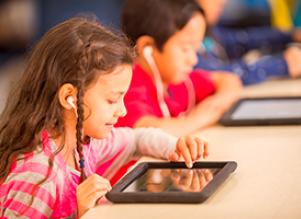8/3/2020
Parents Weigh in on School Reopening Plans
As the coronavirus pandemic continues, parents of K-12 students in the United States are full of questions about if, how, and when their kids will go back to school this fall.
After much of the country abruptly shut down in late March, Congress quickly passed the Coronavirus Aid, Relief, and Economic Security (CARES) Act to boost unemployment payments for people who lost their jobs due to COVID-19 and give K-12 schools a $13.5 billion shot in the arm. The benefits provided by the act expired at the end of July, by which time many people assumed that the worst of the pandemic would be over.
But with August now upon us and a new school year on the horizon, public health and education experts are sounding an increasingly urgent alarm.
“I can tell you right now that schools across this country do not have the resources to open this fall,” infectious disease expert Dr. Michael Osterholm said on a recent episode of Meet the Press. “We have surely sent money to the school districts from the federal government, but it’s far, far too little, it’s inadequate, and it’s not arriving in time.”
Along with mixed messages from political leaders (including Secretary of Education Betsy Devos) and the fact that COVID-19 cases are continuing to rise in many states, these funding issues are, as a recent Politico article phrased it, causing “parents across America to freak out.”
So, what's on parents' minds? Let’s take a look.
Wearing masks to school
In late July, approximately 250 parents from across Illinois gathered in the state’s capital to advocate for a mask-free return to school this fall. According to the Million Unmasked March's Facebook page, the group believes that “children wearing masks to school is physically and psychologically damaging.” Although state officials have sided with public health experts thus far by calling for the widespread use of masks, Illinois has not mandated mask-wearing in schools as of the time of writing.

Conversely, a mandate is already in place in Utah that will require all K-12 students to wear masks in school, and while some parents have spoken out in opposition to the rule, others have expressed their support. Of course, the ongoing struggle to stem the rising number of COVID-19 cases in the state may preclude Utah's schools from reopening for the fall at all—particularly given the emergence of data indicating that children over the age of 10 can spread the coronavirus as easily as adults.
Creating learning pods
While some parents are focused on how their kids can make a full return to school, others are setting up “learning pods” composed of small groups of students being taught at home by a private tutor or teacher.
Also referred to as “pandemic pods,” learning pods are taking root in cities like San Francisco, where health officials have ruled that schools cannot open for part- or full-time instruction anytime soon. According to the San Francisco Examiner's Ida Mojadad, the pod concept is proliferating at a time when “reality of a long-term absence from a class setting is sinking in for many parents”—particularly with regard to the prolonged loss of face-to-face instruction and the challenges of monitoring their kids’ distance learning while simultaneously trying to work from home themselves.
Advocating for equity
Learning pods might sound appealing, but they come with a high price tag. According to CBS, the estimated cost of such an endeavor can range from “as high as $100 an hour to as low as $100 a day,” meaning families that have the most resources at their disposal are poised to reap the lion's share of the benefits.
Indeed, Forbes contributor Rebekah Bastian recently warned that the learning pod trend has the potential to yield “highly inequitable results” that exacerbate existing differentiators, reinforce problematic patterns of racial and economic segregation, and exclude students who need special education services or other forms of support.
Rather than joining the learning pod movement, Bastian advised parents with resources to advocate for “better solutions from governments and school boards”; for instance, by pushing for an in-school pod model that involves a small cohort of students staying with one teacher to minimize the spread of COVID-19.
In a recent post on Medium, Michigan-based parent and educator Shayla Griffin similarly emphasized prioritizing equity when formulating plans for the fall. More specifically, Griffin contended that students who are most marginalized—whom she defined as “those who will not eat without school, those who will not be safe in their homes without school, those who are too young to be left home alone unsupervised but will be left anyway because their parents have no choice but to work in order to feed them, those with disabilities that cannot be supported outside of a school building”—should be allowed back into the classroom, while their peers are required to stay home.

